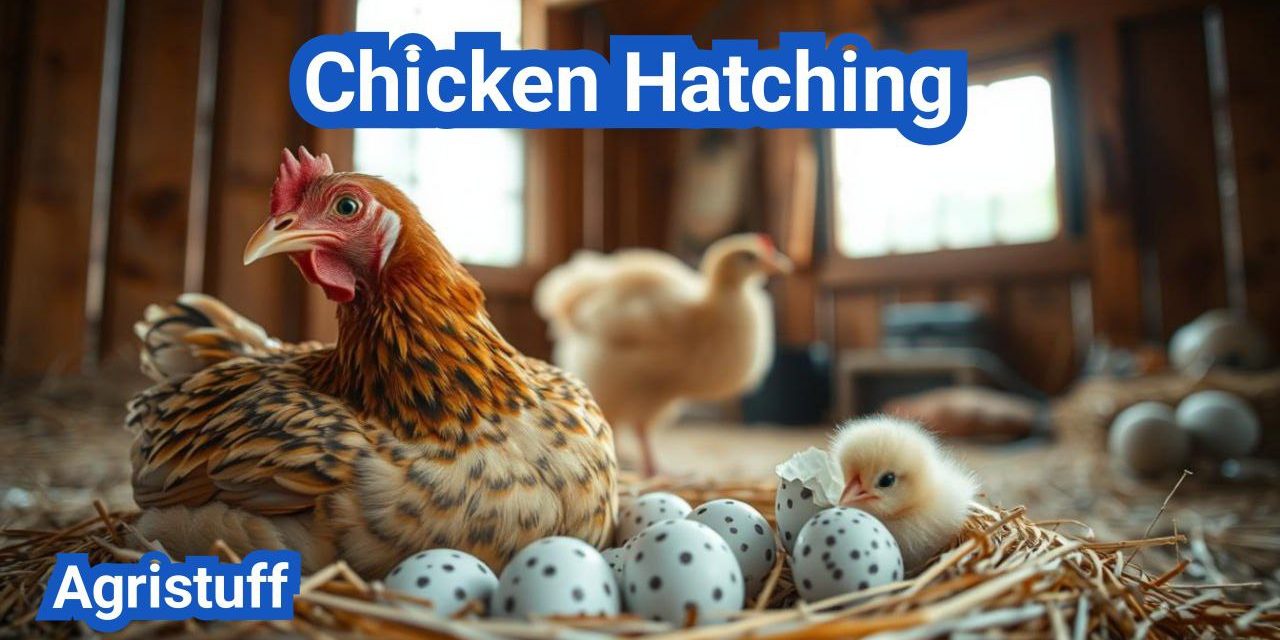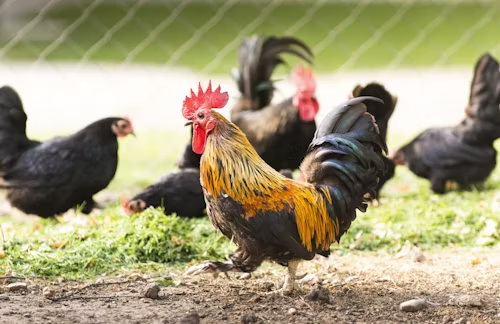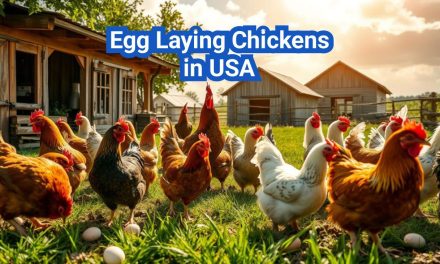For many, backyard chicken hatching is a fun and rewarding experience, offering a unique opportunity to raise chickens from eggs. However, it requires careful attention to detail, especially when it comes to chicken hatching eggs and understanding the chicken hatching time.
Successful chicken hatching at home involves more than just placing eggs in an incubator. It demands a thorough understanding of the incubation process and the factors that influence it. By mastering the basics of chicken hatching, individuals can enjoy the benefits of raising their backyard chickens.
Key Takeaways
- Understand the importance of proper incubation techniques for successful chicken hatching.
- Learn about the factors that influence chicken hatching time.
- Discover the benefits of raising backyard chickens.
- Gain insights into selecting the right chicken hatching eggs.
- Understand the basics of backyard chicken hatching.
The Complete Guide to Chicken Hatching at Home
For successful chicken hatching at home, it’s crucial to start with fertile eggs. The process involves understanding the natural reproduction cycle of chickens, the benefits of hatching your own chicks, and what to expect as a first-time hatcher.
The Natural Reproduction Cycle
Chicken reproduction is a fascinating process. Hens lay eggs, which, if fertilized, can develop into embryos. The natural incubation period for chicken eggs is approximately 21 days. Understanding this cycle is essential for successful hatching.
Why Hatch Your Own Chicks
Hatching your own chicks can be a rewarding experience, offering several benefits. It allows you to control the environment and ensure the health of your chicks from the very beginning. Moreover, it’s an educational experience, especially for children, teaching them about the life cycle of chickens.
- Gain control over the hatching environment
- Ensure the health and quality of your chicks
- Educational opportunity for families
What to Expect as a First-Time Hatcher
As a first-time hatcher, it’s normal to feel a mix of excitement and apprehension. You can expect to invest time in learning about incubation techniques, including temperature and humidity control. Being prepared for potential challenges will enhance your chances of success.
Key considerations include:
- Understanding the importance of maintaining consistent temperature and humidity levels.
- Learning to candle eggs to monitor embryo development.
- Being prepared to assist chicks that may need help hatching.
Essential Equipment for Successful Hatching

The journey to hatching your own chicks begins with understanding the essential equipment required. Successful chicken hatching at home demands careful planning and the right tools.
Incubators: Types and Features
An incubator is the cornerstone of chicken hatching equipment. It provides a controlled environment for the eggs, mimicking the conditions a mother hen would offer. When choosing an incubator for hatching chicken eggs, consider factors such as turning, temperature control, and humidity control. There are various types, including:
- Manual turn incubators, which require you to turn the eggs yourself.
- Automatic turn incubators, which simplify the process by turning the eggs for you.
- Still air incubators, which rely on natural air circulation.
- Forced air incubators, which use a fan to circulate air, providing more consistent temperature and humidity.
Each type has its advantages, and the choice depends on your specific needs and experience level.
Egg Candlers and Monitoring Tools
Egg candlers are vital for monitoring the development of the embryos inside the eggs. By shining a light through the egg, you can check for signs of growth and viability. This process, known as candling, helps you identify and remove non-viable eggs, improving the overall hatch rate.
Humidity Control Devices
Maintaining the right humidity control is crucial for successful hatching. Devices that help manage humidity levels ensure that the environment inside the incubator remains optimal for the developing chicks. This includes hygrometers to measure humidity and devices to add moisture as needed.
Post-Hatch Brooding Equipment
After the chicks have hatched, brooding equipment becomes essential. This includes brooders that provide a safe and warm environment for the chicks, heat lamps or heaters to maintain the right temperature, and feeders and waterers designed for young chicks.
By investing in the right equipment and understanding how to use it, you can significantly improve your chances of successful chicken hatching.
Selecting and Sourcing Fertile Eggs
Fertile eggs are the foundation of successful chicken hatching, and sourcing them requires careful consideration. The quality of the eggs directly impacts the health and viability of the chicks, making it crucial to select eggs from reputable sources.
Local vs. Mail-Order Sources
When it comes to sourcing fertile eggs, you have two primary options: local breeders and mail-order suppliers. Local breeders can offer the advantage of personal interaction and the ability to inspect the breeding stock. On the other hand, mail-order suppliers can provide a wider variety of breeds and often have a reputation for quality.
Consider the following when deciding between local and mail-order sources:
- The reputation of the breeder or supplier
- The breed and quality of the eggs
- Customer service and support
- Shipping and handling practices for mail-order eggs
Popular Hatcheries in the United States
The United States is home to numerous reputable hatcheries that supply fertile eggs across the country. Some of the most well-known include:
- Metzer Farms
- Hatchery Choice
- Stromberg’s Chicks
- My Pet Chicken
These hatcheries offer a range of breeds and often provide detailed information about the eggs, including fertility rates and hatchability.
Identifying Quality Hatching Eggs
Quality hatching eggs are crucial for a successful hatch. Look for eggs that are:
- Clean and free of cracks
- Uniform in size and shape
- From healthy, well-cared-for breeding stock
It’s also important to store hatching eggs properly before incubation to maintain their viability.
Breed Selection for Beginners
For those new to chicken hatching, selecting the right breed is vital. Some breeds are more beginner-friendly due to their hardiness and ease of care. Popular breeds for beginners include:
- Rhode Island Reds
- Leghorns
- Plymouth Rock
These breeds are known for their robust health and high productivity, making them ideal for those just starting out with chicken hatching.
The Chicken Hatching Calendar: 21-Day Timeline

The 21-day incubation period is a critical journey for chicken eggs, filled with significant developmental milestones. Understanding this timeline is essential for breeders to monitor progress, identify potential issues, and ensure a successful hatch.
Day 1-7: Early Development Stages
During the first week, the embryo undergoes rapid growth. By day 3, the heart begins to beat, and by day 7, the embryo’s major organs have started to form. Careful monitoring of temperature and humidity is crucial during this period to support healthy development.
Day 8-14: Mid-Incubation Milestones
Between days 8 and 14, the embryo’s development accelerates. Feathers, beaks, and claws begin to form, and the embryo starts to move. Candling eggs around day 10 can help identify viable embryos and detect any issues.
| Day | Developmental Milestones |
|---|---|
| 8 | Embryo’s eyes and feathers start developing |
| 10 | Candling can reveal embryo’s viability |
| 12 | Feathers, beaks, and claws are more pronounced |
| 14 | Embryo’s movement becomes more vigorous |
Day 15-18: Pre-Lockdown Period
As the incubation period reaches its third week, the embryo’s development is nearly complete. It’s essential to stop turning eggs on day 18 to prepare for hatching, marking the beginning of the lockdown period.
“The final days of incubation are critical. Maintaining the right environment ensures the embryos develop properly and are ready to hatch.”
— Expert Breeder
Day 19-21: Final Hatching Phase
The last days of incubation are the most anticipated. Chicks start to pip (break through the shell) around day 19 or 20, with most hatching by day 21. Maintaining high humidity during this period can help ease the hatching process.
By understanding and following the chicken hatching calendar, breeders can significantly improve their chances of a successful hatch. Monitoring developmental milestones and adjusting incubation conditions accordingly are key to supporting the embryos through their critical stages of growth.
Proper Egg Storage and Preparation
Before diving into the hatching process, it’s crucial to understand the importance of proper egg storage and preparation. The viability of hatching eggs is significantly influenced by how they are stored and handled before incubation.
Temperature and Humidity Requirements
Egg storage temperature and humidity are critical factors that affect the viability of the embryos. Ideally, hatching eggs should be stored at a temperature between 55°F and 60°F (13°C to 15°C) and humidity around 50%. This cool environment slows down the embryo’s development, preserving its viability for a longer period.
According to a study published in the Journal of Applied Poultry Research, maintaining a consistent storage temperature is vital for minimizing embryonic mortality. “Storage temperatures outside the optimal range can lead to a significant decrease in hatchability,” the study notes.
| Storage Condition | Ideal Range |
|---|---|
| Temperature | 55°F – 60°F (13°C – 15°C) |
| Humidity | Around 50% |
Positioning and Rotation Methods
Egg positioning during storage is another crucial aspect. Eggs should be stored with the large end facing upwards to keep the embryo in the correct position. Although turning is not required during storage, occasional gentle rotation can help prevent the embryo from sticking to the shell membrane.
Maximum Storage Duration
The duration for which hatching eggs can be stored varies, but generally, it’s recommended not to exceed 7 to 10 days. The longer eggs are stored, the lower the hatchability rate. Fresh eggs have a higher chance of successful hatching.
Cleaning and Sanitizing Considerations
While it’s essential to keep hatching eggs clean, washing eggs can be detrimental as it can remove the protective cuticle, making them more susceptible to bacterial contamination. If eggs are dirty, a dry cleaning method or a gentle wipe with a dry cloth is recommended.
By adhering to these guidelines for egg storage and preparation, you can significantly improve the chances of successful hatching. Proper handling and storage conditions set the stage for a healthy start for your chicks.
Setting Up Your Incubation Environment

To hatch chickens successfully, it’s essential to establish a suitable incubation environment. This involves careful planning and preparation to ensure that your incubator operates under optimal conditions.
Ideal Location in Your Home
The location of your incubator within your home is critical. It should be placed in a room that maintains a stable temperature and humidity level. Avoid areas near heating vents, windows, or doors that could cause fluctuations. A consistent environment helps in maintaining the precise conditions required for the development of the embryos.
Stabilizing Room Conditions
To stabilize room conditions, consider the overall climate of your area and how it might affect the room’s temperature and humidity. Using a thermostat and a humidistat can help maintain a consistent environment. It’s also beneficial to minimize drafts and keep the room away from direct sunlight, which can cause temperature fluctuations.
Monitoring the room’s conditions regularly will help you make adjustments as necessary. This proactive approach ensures that your incubator operates within the optimal range for chicken hatching.
Preparing the Incubator
Before placing eggs in the incubator, it’s crucial to prepare it according to the manufacturer’s instructions. This includes setting the correct temperature, humidity levels, and ensuring that the egg-turning mechanism is functioning properly.
Key steps in preparing your incubator include:
- Calibrating the temperature and humidity controls.
- Testing the incubator’s ability to maintain consistent conditions.
- Familiarizing yourself with the incubator’s operation and features.
By carefully setting up your incubation environment, you lay the foundation for a successful hatching process. Ensuring that your incubator is in a suitable location and that room conditions are stable will significantly improve your chances of hatching healthy chicks.
Mastering Chicken Hatching Temperature

Maintaining the perfect temperature is crucial for successful chicken hatching. The ideal temperature for incubating chicken eggs is between 99°F and 100°F.
Optimal Temperature Ranges
The temperature range for chicken hatching is quite narrow. Incubators should be set to maintain a consistent temperature within this range to ensure proper embryonic development. Temperatures that are too high or too low can lead to developmental issues or even embryo mortality.
A temperature range of 99°F to 100°F is generally recommended for chicken eggs. However, it’s essential to check the specific requirements for the breed you are incubating, as some may have slightly different needs.
Managing Temperature Fluctuations
Temperature fluctuations can be detrimental to the developing embryos. It’s crucial to minimize these fluctuations to ensure a successful hatch.
- Ensure your incubator is in a stable environment, away from direct sunlight and drafts.
- Use a high-quality incubator with reliable temperature control.
- Monitor the temperature regularly, using multiple thermometers if possible.
Thermometer Types and Placement
The type and placement of thermometers are critical for accurate temperature monitoring.
| Thermometer Type | Accuracy | Placement |
|---|---|---|
| Digital Thermometer | High | Inside the incubator, near the eggs |
| Mercury Thermometer | Medium | Inside the incubator, but not directly on the eggs |
| Infrared Thermometer | High | Used for spot-checking temperature |
Troubleshooting Temperature Issues
Despite best efforts, temperature issues can arise. Knowing how to troubleshoot these problems is essential.
If the temperature is consistently too high or too low, check the incubator’s heating and cooling elements. Ensure that the incubator is properly calibrated and that there are no obstructions affecting airflow.
Regular maintenance and monitoring can help prevent temperature-related issues.
Humidity Control Throughout the Hatching Process

Maintaining optimal humidity levels is crucial throughout the chicken hatching process. Humidity control plays a significant role in ensuring that eggs develop properly and hatch successfully.
Stage-Specific Humidity Requirements
Different stages of the incubation process require different levels of humidity. Typically, the first 18 days require a relatively lower humidity level, around 50-60%. During the final days (19-21), the humidity should be increased to 60-70% to facilitate the hatching process.
Methods for Measuring Humidity
Accurate measurement of humidity is essential for maintaining optimal conditions. Digital hygrometers are commonly used for this purpose, providing precise readings that help in adjusting the humidity levels as needed.
Adjusting Humidity Levels
Adjusting humidity levels can be achieved by adding water to the incubator or using a humidifier. It’s crucial to monitor the humidity levels closely and make adjustments gradually to avoid sudden changes that could affect the developing embryos.
Regional Adjustments for Different Climates
The ambient climate and humidity levels in your region can significantly impact the incubation environment. For instance, in dry climates, additional humidification may be necessary, while in humid climates, ventilation might need to be increased to prevent excessive moisture buildup.
Egg Turning: Critical for Development

The process of turning eggs during incubation is vital for preventing embryo sticking and ensuring healthy chick development. Egg turning mimics the natural movement a hen would provide if she were sitting on the eggs, which is crucial for the even distribution of nutrients and the prevention of the embryo adhering to the shell membrane.
Why Turning Prevents Embryo Sticking
When eggs are not turned, the embryo can stick to the shell membrane, leading to developmental issues or even death. Regular turning ensures that the embryo remains suspended in the albumen, promoting healthy growth and development. This is particularly important during the initial stages of incubation when the embryo is most vulnerable.
Manual Turning Techniques and Schedules
For those using incubators without automatic turning, manual turning is a viable alternative. It’s essential to establish a consistent turning schedule to mimic the natural turning a broody hen would provide. A common practice is to turn eggs at least three times a day, ensuring that the eggs are rotated to different positions to prevent the embryo from sticking to one side of the shell.
Automatic Turning Systems
Many modern incubators come equipped with automatic turning systems, which greatly simplify the incubation process. These systems can be set to turn eggs at regular intervals, reducing the risk of human error. Automatic turning systems are particularly beneficial for large-scale incubation operations or for individuals who may not be able to manually turn eggs frequently.
When to Stop Turning (Day 18)
It’s crucial to stop turning eggs on day 18 of incubation to allow the chick to properly position itself for hatching. Stopping egg turning at this stage helps the chick to move into the correct hatching position, ensuring a successful hatch. After day 18, the focus shifts to maintaining optimal temperature and humidity levels until the eggs hatch on day 21.
| Day | Turning Frequency | Notes |
|---|---|---|
| 1-7 | 3 times a day | Establish consistent turning schedule |
| 8-14 | 3 times a day | Continue regular turning |
| 15-18 | 3 times a day | Maintain turning until day 18 |
| 19-21 | Stop turning | Prepare for hatching |
Candling Eggs to Monitor Development

Monitoring egg development is crucial for successful hatching, and candling eggs is a vital technique in this process. By shining a light through the egg, you can observe the embryo’s growth and identify any potential issues early on.
DIY and Commercial Candling Tools
Candling can be done using either DIY methods or commercial tools. For a DIY approach, you can use a simple flashlight or a dedicated egg candler. Commercial candling tools, on the other hand, offer more precision and often include features like adjustable brightness.
The Candling Process Step-by-Step
To candle eggs effectively, follow these steps:
- Gently hold the egg against the light source.
- Observe the egg’s contents, looking for signs of development.
- Take note of any abnormalities or lack of development.
What to Look For at Different Stages
At different stages of incubation, you should look for specific signs of development. Early on, you might see a small dark spot or a network of blood vessels. As the embryo grows, you’ll notice more pronounced features.
It’s essential to be gentle when handling eggs to avoid causing damage.
Identifying and Removing Infertile Eggs
One of the key benefits of candling is identifying infertile eggs or eggs with non-viable embryos. By removing these eggs, you can prevent potential contamination and focus your resources on the healthy eggs.
Regular candling is a simple yet effective way to monitor egg development and improve your chances of successful hatching.
Natural Hatching with Broody Hens

Broody hens offer a unique opportunity for natural hatching, allowing you to tap into the natural reproductive cycle of chickens. This method of hatching eggs is not only a more natural approach but also a rewarding experience for backyard chicken keepers.
Breeds Known for Broodiness
Certain chicken breeds are renowned for their broodiness, making them ideal for natural hatching. Breeds such as the Silkie, Cochin, and Orpington are known for their strong maternal instincts. These hens are more likely to sit on eggs and care for their chicks, making them perfect for those looking to hatch chickens naturally.
“The best way to teach people about your farm is to let them see and experience it for themselves.” – Joel Salatin
Identifying and Supporting Broody Behavior
Identifying a broody hen is crucial for successful natural hatching. Signs of broodiness include a hen that refuses to leave her nesting box, fluffed feathers, and aggressive behavior when approached. To support broody behavior, ensure the hen has a safe, comfortable, and draft-free environment. Providing a nutritious diet and access to fresh water is also essential.
Setting Up the Ideal Nesting Area
The nesting area for a broody hen should be quiet, dark, and protected from predators. It’s advisable to set up a dedicated brooding area with adequate bedding, such as straw or hay, to keep the eggs clean and dry. Ensuring the area is well-ventilated and maintaining a comfortable temperature will help keep the hen and her eggs healthy.
Monitoring the Hen and Eggs
Regular monitoring of both the hen and the eggs is vital. Check the eggs for any signs of damage or issues during the incubation period. Also, ensure the hen is healthy and has access to food and water without leaving her eggs unattended. This balance is crucial for the success of natural hatching.
The Lockdown Period: Days 18-21

As the hatching process nears its end, the lockdown period begins, marking a critical phase in the development of the chicks. This period, spanning from days 18 to 21, is characterized by significant changes in the incubation environment to support the final stages of hatching.
Stopping Egg Turning
One of the key actions during the lockdown period is stopping egg turning. By day 18, it’s essential to halt the egg turning process to allow the chicks to move into the correct hatching position. Failure to stop turning can result in chicks being unable to pip or hatch properly.
Final Humidity Adjustments
During the lockdown period, humidity levels need to be adjusted to facilitate the hatching process. Increasing the humidity helps prevent the membranes from drying out, making it easier for the chicks to pip and hatch. Typically, humidity should be increased to around 65-70% during this phase.
Preparing for Pip and Hatch
As the lockdown period progresses, it’s crucial to prepare for the pip and hatch. This involves ensuring that the incubator is set up to provide the optimal environment for hatching. Monitoring the temperature and humidity closely is vital to avoid any complications during hatching.
What to Expect During Hatching
During the hatching process, several signs indicate that the chicks are about to hatch. These include:
- Pipping: The first sign of hatching, where the chick breaks through the shell.
- Zipping: As the chick continues to break free from the shell.
- Hatching: The final stage where the chick completely emerges from the egg.
It’s essential to remain patient and not assist the chicks unless absolutely necessary, as this can cause more harm than good.
“The miracle of a chick hatching is a complex and delicate process. Understanding and supporting this natural process can significantly improve hatch rates and chick health.”
— Expert in Poultry Farming
When and How to Assist Struggling Chicks
Assisting struggling chicks during the hatching process requires a delicate balance between intervention and letting nature take its course. While most chicks hatch without issue, some may need help. Understanding the signs of distress and knowing how to assist properly is crucial for successful hatching.
Signs a Chick Needs Help
Chicks that are struggling to hatch may exhibit certain signs, such as being stuck in the shell or showing signs of exhaustion. It’s essential to monitor the hatching process closely to identify these issues early.
- Prolonged labor: If a chick is taking too long to hatch, it may need assistance.
- Abnormal positioning: Chicks that are not positioned correctly within the egg may struggle to hatch.
- Visible distress: Signs such as bleeding, unusual discharge, or a chick that’s partially hatched but stuck can indicate a need for intervention.
Proper Assistance Techniques
When assisting a struggling chick, it’s crucial to be gentle and cautious to avoid causing further harm. The process involves carefully enlarging the pip (the initial crack in the eggshell) and potentially helping the chick to free itself from the shell.
Key steps include:
- Carefully examining the chick’s position and the extent of the pip.
- Gently enlarging the pip if necessary, taking care not to damage the chick or its membranes.
- Assisting the chick in freeing itself, if possible, without pulling on the chick or forcing it out of the shell.
When to Let Nature Take Its Course
Not all struggling chicks need assistance. Sometimes, chicks may appear to be struggling when they are actually just part of the normal hatching process. It’s essential to understand when to intervene and when to let nature take its course.
| Situation | Intervention Needed | Let Nature Take Its Course |
|---|---|---|
| Chick is stuck and not making progress | Yes | No |
| Chick is taking a long time but showing signs of progress | No | Yes |
| Chick is malpositioned | Possibly | Depends on the position |
Dealing with Malpositioned Chicks
Malpositioned chicks are those that are not correctly positioned within the egg, which can complicate the hatching process. Understanding how to identify and potentially assist these chicks is crucial.
Common malpositions include:
- Head between legs
- Legs over head
- Beak pointing away from the air sac
In some cases, gentle assistance can help reposition the chick. However, this requires great care and is not always successful.
First 72 Hours of Chick Care
The first 72 hours of a chick’s life are crucial for its development and survival. Proper chick care during this period involves several critical steps to ensure the chicks grow healthily and thrive.
Setting Up a Proper Brooder
A brooder setup is essential for providing a safe and healthy environment for your chicks. The brooder should be clean, dry, and well-ventilated. Start by lining the brooder with a suitable bedding material like pine shavings or shredded paper.
- Ensure the brooder is draft-free and has adequate ventilation.
- Maintain a temperature of around 95°F (35°C) for the first week, reducing it by 5°F (2.8°C) each subsequent week.
- Provide a heat source, such as a heat lamp or heat mat, and monitor the temperature closely.
Identifying and Treating Pasty Butt
Pasty butt is a condition where feces stick to a chick’s vent area, potentially causing serious health issues if not addressed. To identify pasty butt, look for a buildup of fecal matter around the vent.
- Gently clean the affected area with warm, damp cotton balls.
- Ensure the chick is kept in a clean environment to prevent reoccurrence.
- Monitor the chick’s overall health and consult a veterinarian if the condition persists.
Monitoring Chick Health and Behavior
Monitoring chick health and behavior is crucial during the first 72 hours. Check for signs of illness or stress, such as lethargy, labored breathing, or unusual droppings.
- Ensure chicks are active and alert.
- Check that they are eating and drinking properly.
- Watch for any signs of bullying or stress within the group.
Introducing Chicks to a Broody Hen
If you have a broody hen, introducing chicks to her can be a great way to provide natural care. Ensure the hen is calm and receptive before introducing the chicks.
Place the chicks under the hen at night when she is most likely to accept them. Monitor the interaction closely to ensure the hen is caring for the chicks properly.
Troubleshooting Common Hatching Problems
Understanding the common problems that can occur during chicken hatching can help you take corrective action and improve your hatch rates. Whether you’re a seasoned breeder or a beginner, being able to identify and solve issues as they arise is crucial for success.
Poor Hatch Rates: Causes and Solutions
Poor hatch rates can be caused by a variety of factors, including suboptimal incubation conditions, poor egg quality, and genetic issues. To improve hatch rates, it’s essential to identify the underlying cause.
Common Causes of Poor Hatch Rates:
- Inadequate temperature control
- Incorrect humidity levels
- Poor egg handling and storage
- Genetic factors
| Cause | Solution |
|---|---|
| Inadequate temperature control | Ensure the incubator maintains a consistent temperature between 99-100°F. |
| Incorrect humidity levels | Maintain humidity levels between 50-60% for the first 18 days, then increase to 65-70% for the final days. |
| Poor egg handling and storage | Store eggs in a cool, humid environment and turn them regularly. |
| Genetic factors | Select breeding stock from healthy, vigorous lines. |
Temperature and Humidity Issues
Temperature and humidity are critical factors in successful chicken hatching. Fluctuations or incorrect levels can lead to poor hatch rates or abnormal chick development.
Monitoring and Adjusting Temperature and Humidity:
- Use a thermometer and hygrometer to monitor conditions.
- Adjust the incubator’s temperature and humidity settings as needed.
- Ensure good air circulation around the incubator.
Genetic and Egg Quality Factors
The quality of the hatching eggs and the genetic makeup of the breeding stock can significantly impact hatch rates. Selecting healthy, fertile eggs from vigorous breeding lines is essential.
Incubator Malfunctions
Incubator malfunctions can lead to disastrous hatch results. Regular maintenance and monitoring can help prevent issues.
Common Incubator Malfunctions:
- Heating element failure
- Humidity control issues
- Turning mechanism failure
By understanding and addressing these common hatching problems, you can significantly improve your chances of a successful hatch.
Your Path to Hatching Success
Achieving hatching success is a rewarding experience for backyard chicken enthusiasts. With proper techniques and equipment, you can successfully hatch eggs at home. By understanding the chicken hatching process, selecting the right equipment, and maintaining optimal incubation conditions, you can enjoy the thrill of watching new life emerge.
By following the guidelines outlined in this article, you can overcome common challenges and achieve a high hatch rate. Whether you’re a seasoned breeder or just starting out, the joy of chicken hatching is an experience like no other. As you embark on your hatching journey, remember to stay patient, monitor your eggs closely, and be prepared to adapt to any unexpected issues that may arise.
With dedication and the right knowledge, you can achieve hatching success and enjoy the many rewards of raising backyard chickens. Happy hatching!
FAQ
How long does it take for chicken eggs to hatch?
Chicken eggs typically take 21 days to hatch, given optimal incubation conditions.
What is the ideal temperature for hatching chicken eggs?
The ideal temperature for hatching chicken eggs is between 99°F and 100°F (37.2°C to 37.8°C).
How often should I turn chicken eggs during incubation?
Chicken eggs should be turned at least 3-5 times a day to prevent the embryo from sticking to the shell.
What is the importance of humidity during incubation?
Maintaining the right humidity levels is crucial for preventing dehydration and ensuring proper chick development.
How do I know if my chicken eggs are fertile?
Fertile eggs can be identified by candling, which involves shining a light through the egg to observe the embryo’s development.
What is candling, and how is it done?
Candling involves using a light source to inspect the egg’s contents, helping to identify fertile eggs and monitor embryo development.
Can I hatch chicken eggs without an incubator?
Yes, you can hatch chicken eggs naturally using a broody hen, but an incubator provides more control over temperature and humidity.
How do I care for newly hatched chicks?
Newly hatched chicks require a warm brooder, adequate nutrition, and proper hygiene to ensure their health and well-being.
What is pasty butt, and how is it treated?
Pasty butt is a condition where feces stick to a chick’s vent area, and it can be treated by gently cleaning the area with warm water.
How can I improve my hatch rate?
Improving hatch rate involves ensuring optimal incubation conditions, selecting high-quality fertile eggs, and maintaining proper equipment.
What are the signs that a chick is struggling to hatch?
Signs of a struggling chick include prolonged pipping, failure to fully emerge from the shell, or visible distress.
When should I intervene to help a struggling chick?
Intervention should be considered if a chick is having trouble hatching after a prolonged period, but it’s crucial to avoid causing harm.
Conclusion of: Chicken Hatching
Chicken hatching is an exciting and rewarding process, especially for families, homesteaders, or anyone interested in raising poultry. Successfully managing chicken hatching at home gives you full control over the health, genetics, and environment of your future flock. In the USA, chicken hatching is increasingly embraced by backyard farmers and small-scale poultry enthusiasts. Learn more about backyard poultry basics from the University of Minnesota Extension.
Why Try Chicken Hatching at Home
Chicken hatching allows you to start your flock from scratch, ensuring healthy development from day one. Chicken hatching is also cost-effective compared to buying grown birds and provides a hands-on educational experience about the poultry life cycle. Discover the benefits of raising chickens from Penn State Extension.
Choosing Fertile Eggs for Chicken Hatching
The first step in chicken hatching is selecting high-quality, fertile eggs. For optimal results, choose clean, uniformly shaped eggs from healthy hens and roosters. Freshness is vital in chicken hatching—ideally, eggs should be no more than 7 days old. The USDA provides guidelines for selecting eggs for hatching.
How to Store Eggs Before Chicken Hatching
Before incubation, eggs should be stored properly to ensure successful chicken hatching. Keep them at a temperature between 55–65°F with 70–80% humidity, and rotate them at least twice daily. This prevents the yolk from sticking to the shell. Mississippi State University offers detailed storage recommendations.
Setting Up Your Chicken Hatching Incubator
An incubator is essential for artificial chicken hatching. Set the temperature at 99.5°F and maintain 40–50% humidity during the first 18 days. Turn eggs at least 3 times daily to mimic the actions of a broody hen. For incubation best practices, see Iowa State University’s guide.
Transitioning to the Lockdown Phase in Chicken Hatching
On day 18 of chicken hatching, stop turning the eggs and raise humidity to around 65–70%. This is the “lockdown” period, where eggs stay in place and chicks prepare to hatch. Avoid opening the incubator during this critical phase. More about incubation timing can be found at The Poultry Site.
How to Handle the Hatch During Chicken Hatching
During the hatching process, chicks use their egg tooth to pip and break the shell. Chicken hatching can take up to 24 hours from the first crack to complete emergence. It’s best to observe without interfering to avoid complications. The University of Florida explains the hatching process in detail.
Caring for Chicks After Chicken Hatching
Once chicken hatching is complete, move the chicks to a warm brooder with clean bedding, access to fresh water, and high-quality chick starter feed. Monitor temperature closely—start at 95°F and lower it by 5°F each week. Michigan State University’s brooding guide offers comprehensive care instructions.
Common Issues in Chicken Hatching
Problems like late hatches, weak chicks, or unhatched eggs can occur. These chicken hatching issues often result from temperature fluctuations, improper humidity, or poor egg quality. Keeping detailed records helps identify and fix these problems. University of Kentucky provides troubleshooting tips for common hatch problems.
Using a Broody Hen for Chicken Hatching
Chicken hatching doesn’t always require an incubator. A broody hen can hatch eggs naturally with minimal human intervention. Make sure she is healthy, isolated from other birds, and has access to food and water. Learn about natural incubation from Oregon State University.
Creating a Clean Environment for Chicken Hatching
Sanitation is critical during chicken hatching. Clean the incubator thoroughly before and after each use. Disinfect all surfaces, trays, and tools involved in chicken hatching to prevent disease. The CDC’s poultry biosecurity measures provide important guidelines.
Temperature and Humidity Control in Chicken Hatching
Consistency is the key to successful chicken hatching. Use a calibrated thermometer and hygrometer to ensure conditions remain within the ideal range. Avoid frequent opening of the incubator to maintain stability. Virginia Tech’s incubator management guide offers valuable insights.
Chick Identification After Chicken Hatching
If you’re hatching multiple breeds, consider marking chicks after chicken hatching using leg bands or safe, temporary markers. This helps with breed tracking and flock management. Purdue University’s poultry record keeping guide includes identification methods.
Troubleshooting Failed Chicken Hatching Attempts
Failed chicken hatching attempts may stem from infertile eggs, rough handling, or improper incubation. Performing egg autopsies (candling or breaking unhatched eggs) can offer insights for improvement in future chicken hatching attempts. The University of Georgia’s egg candling guide is a helpful resource.
Maintaining a Chicken Hatching Logbook
A logbook is essential for documenting each chicken hatching experience. Record temperature, humidity, turning schedules, hatch dates, and any anomalies to improve results over time. The USDA’s small flock record keeping guide provides useful templates.
Legal Considerations for Chicken Hatching in the USA
Before starting chicken hatching at home, check local ordinances and regulations regarding poultry. Some areas have restrictions on the number of chickens allowed or require permits for backyard flocks. The American Poultry Association maintains information on local laws.
Educational Value of Chicken Hatching
Chicken hatching offers valuable lessons in biology, responsibility, and animal care. Many schools and homesteads use chicken hatching projects to teach students about the poultry lifecycle and sustainable food production. National 4-H Council’s poultry projects demonstrate the educational benefits.
Scaling Up Chicken Hatching Operations
If you find success with small-scale chicken hatching, you may choose to expand. This could include acquiring a larger incubator, breeding multiple flocks, or even turning your chicken hatching hobby into a small business. The Small Business Administration’s agribusiness guide offers expansion advice.
Final Thought
Chicken hatching is a hands-on and deeply rewarding way to build your own flock. With careful attention to detail, a clean setup, and patience, anyone in the USA can enjoy the success of hatching healthy chicks right at home. For beginners, Backyard Poultry Magazine’s guide is an excellent starting point.










